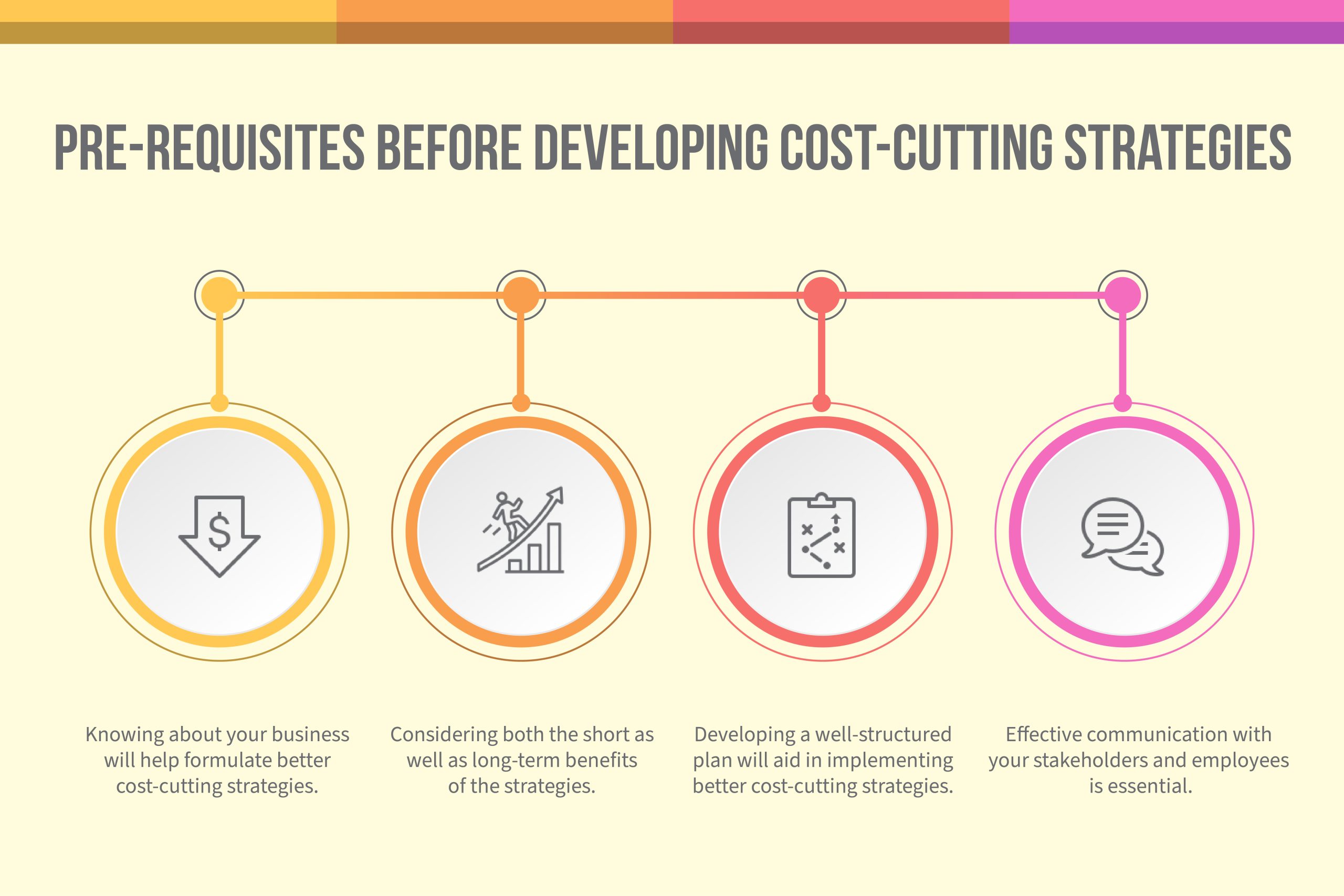Table of Content
Share This Article
- Reading Time: 7 Minutes
- Published: June 17, 2023
- Last Updated: March 5, 2025
As businesses strive to stay ahead of the competition and increase profits, they often find themselves struggling with escalating operational costs. From rising labour costs to increasing energy bills, they are facing an uphill battle when it comes to keeping expenses under control. Keeping expenses under control is integral to the accounting and bookkeeping process. Ineffective expense management may hurt the accounting, bookkeeping, and overall financial system. This is why keeping an eye on your expense management is essential. If you find it difficult to manage it in-house, you can trust the experts. Hiring outsourced accounting and bookkeeping services will provide access to a team of experts proficient in streamlining accounting and bookkeeping systems. Also, outsourcing help eliminate the costs related to in-house employees, making it an efficient cost-cutting strategy for businesses. In this blog, we will explore the importance of such cost-cutting strategies that can help business owners address their mounting operational costs while promoting sustainability and long-term success. So, get ready to save big bucks while increasing efficiency!
Pre-requisites to Follow Before Cost-Cutting
As businesses continue to feel the squeeze of a sluggish economy, many are looking for ways to cut costs. But while cost-cutting is often seen as a solution, it can actually be detrimental if applied without professional help. The development, implementation, and execution of cost-cutting strategies is a cumbersome process. It is times like this when the expertise and knowledge of a CFOs (Chief Financial Officer) prove helpful. As a business owner, you can either hire an in-house CFO or opt for an outsourced CFO service. CFOs play a very important role in implementing cost-cutting while increasing revenue for businesses. By aligning the company’s strategic goals with its financial goals, they ensure that business spending is focused on areas that will generate the greatest return. However, before you begin your journey with your CFO to develop strong cost-cutting strategies, you must observe certain pre-requisites. The pre-requisites are as follows:
- Conduct a Comprehensive Expense Analysis: Analysing and understanding your business expenses is the first step towards effective cost-cutting. By scrutinising each expense category, you can identify areas where costs can be reduced without compromising productivity or quality.
- Consider both short and long-term benefits: Another major step is to take into account both the short as well as long-term benefits of the cost-cutting initiatives. The strategies adopted by your CFO should not only consider short-term spending but also contemplate its sustainability for the long-term business aspects.
- Develop a plan: The next step is to formulate a well-structured plan along with your CFO to understand the overall context, parameters, and possible outcomes of the cost-cutting initiatives. It includes understanding the costs, their breakdown, cost categories, etc.
- Communication: The last pre-requisite is to engage your stakeholders in major business decisions. A successful communication with your stakeholders helps retain their confidence and avoid any surprises down the road. Also, you need to take into account the viewpoints of your employees to ensure harmony within the organisation.

Process of Creating Effective Cost-Cutting Strategies
Cost cutting should be conducted thoughtfully, not indiscriminately. A strategy should be in place to ensure that each cost reduction is a step toward meeting a larger objective. Though different businesses have different objectives, cost-cutting still holds an important place. For instance, businesses might outsource their less strategic tasks to a service provider to fulfil their objective of focusing on the core competencies. Hiring outsourced accounting and bookkeeping services will also help in cost reduction while enabling business owners to devote attention towards crucial tasks. This way, businesses will be able to cut costs as well as increase revenue by focusing more on crucial tasks. Outsourcing non-core business activities is just one strategy among numerous cost-cutting strategies. Let us discuss some cost-cutting strategies that a company can implement:
- Review and Negotiate Supplier Contracts: Regularly reviewing and renegotiating supplier contracts can help you secure better pricing and terms. Explore competitive options, negotiate volume discounts, and consider long-term partnerships to reduce procurement costs.
- Negotiating Discounts on Operating Expenses: This can include negotiating lower rates for rent, utilities, insurance, and other expenses. Being prepared and having all the necessary information is important when negotiating discounts.
- Evaluate Marketing and Advertising Strategies: Review your marketing and advertising strategies to ensure they are cost-effective and yield a high return on investment. Focus on targeted campaigns, digital marketing channels, and data-driven approaches to optimise your marketing budget.
- Reduced Employee Headcount: This is often the most drastic cost-cutting measure, but it can sometimes be necessary. If a company struggles to make ends meet, it may need to lay off employees to reduce expenses.
- Reduced Employees Pay: This can be a less drastic alternative to reducing headcount but can still significantly impact costs. When reducing employee pay, it is important to be fair and to communicate the reasons for the change to employees.
- Streamline and Simplify Processes: Identify inefficiencies in your business processes and find ways to streamline and simplify them. Simplifying workflows can improve productivity, reduce waste, and lower operational costs.
- Embrace Technology and Automation: Investing in technology and automation can streamline processes, eliminate manual errors, and reduce labour costs. Identify areas where technology can replace repetitive tasks or enhance efficiency, such as customer relationship management systems or automated inventory management software.
- Reduce Non-Essential Business Travel: Travel expenses can add up quickly and impact your bottom line. Evaluate the necessity of business trips and encourage alternatives like video conferences or virtual meetings whenever possible to reduce travel-related expenses.
- Encourage Telecommuting and Remote Work: Promoting telecommuting and remote work arrangements can reduce office space requirements, utility costs, and commuting expenses. Embrace digital collaboration tools and create a flexible work environment that allows employees to work remotely when feasible.
- Implement Energy-Saving Measures: Energy costs can be a significant expense for businesses. Implement energy-saving measures like using energy-efficient appliances, installing motion sensor lighting, and optimising heating, ventilation, and air conditioning systems to reduce utility bills.
- Optimise Inventory Management: Effective inventory management is crucial for cost-cutting. Implement just-in-time inventory systems, conduct regular inventory audits, and avoid overstocking to minimise carrying costs and prevent obsolescence.
- Minimise Paper Usage and Go Digital: Transitioning from paper-based processes to digital alternatives can significantly reduce printing, storage, and document management costs. Embrace electronic invoicing, digital file storage, and paperless communication to save money and improve sustainability.
- Leverage Group Purchasing Power: Collaborate with other businesses or join industry associations to leverage group purchasing power. By consolidating purchasing volumes, you can negotiate better pricing and access exclusive discounts on essential supplies or services.
- Review Insurance Policies: Regularly review your insurance policies to ensure you have the appropriate coverage at competitive rates. Consider bundling policies or working with an insurance broker to find the most cost-effective options for your business.
- Explore Outsourcing Opportunities: Consider outsourcing non-core functions or tasks that external vendors can perform more cost-effectively. Outsourcing can help reduce overhead costs, access specialised expertise, and improve operational efficiency. Offshoring can also be an effective way to cut costs.
Cost-cutting should be an ongoing process. Monitor your expenses, track key performance indicators, and review financial reports to identify new cost reduction and operational improvement opportunities.
Bottom Line
Business owners should recognise the importance of cost-cutting and prioritise it to ensure financial stability, profit maximisation, and the creation of new opportunities. By examining current spending, benchmarking market prices, automating manual tasks where possible, encouraging innovation from employees, etc., can surely help them thrive in the long term. However, if you have still not found the right CFO to develop strong and effective cost-cutting strategies, worry not! Whiz Consulting is a name that you can trust on. Our team of experienced professionals will guide you all through the way in effective cost-cutting. We have been providing quality-driven accounting and bookkeeping services to various industries. So, why wait any longer? Contact us today to access the best in the market and take your business to newer heights.

Get customized plan that supports your growth

Thousands of business owners trust Whiz to manage their account
Let us take care of your books and make this financial year a good one.








